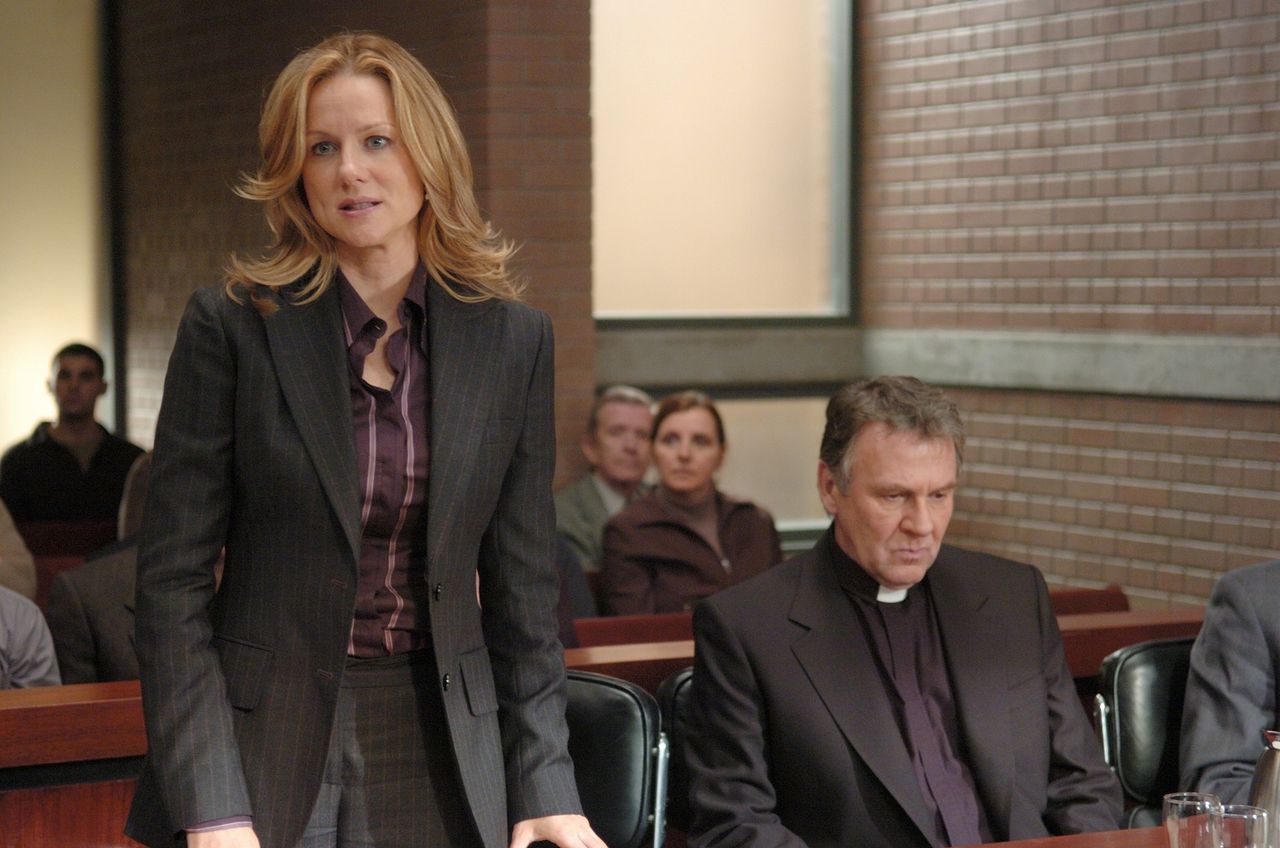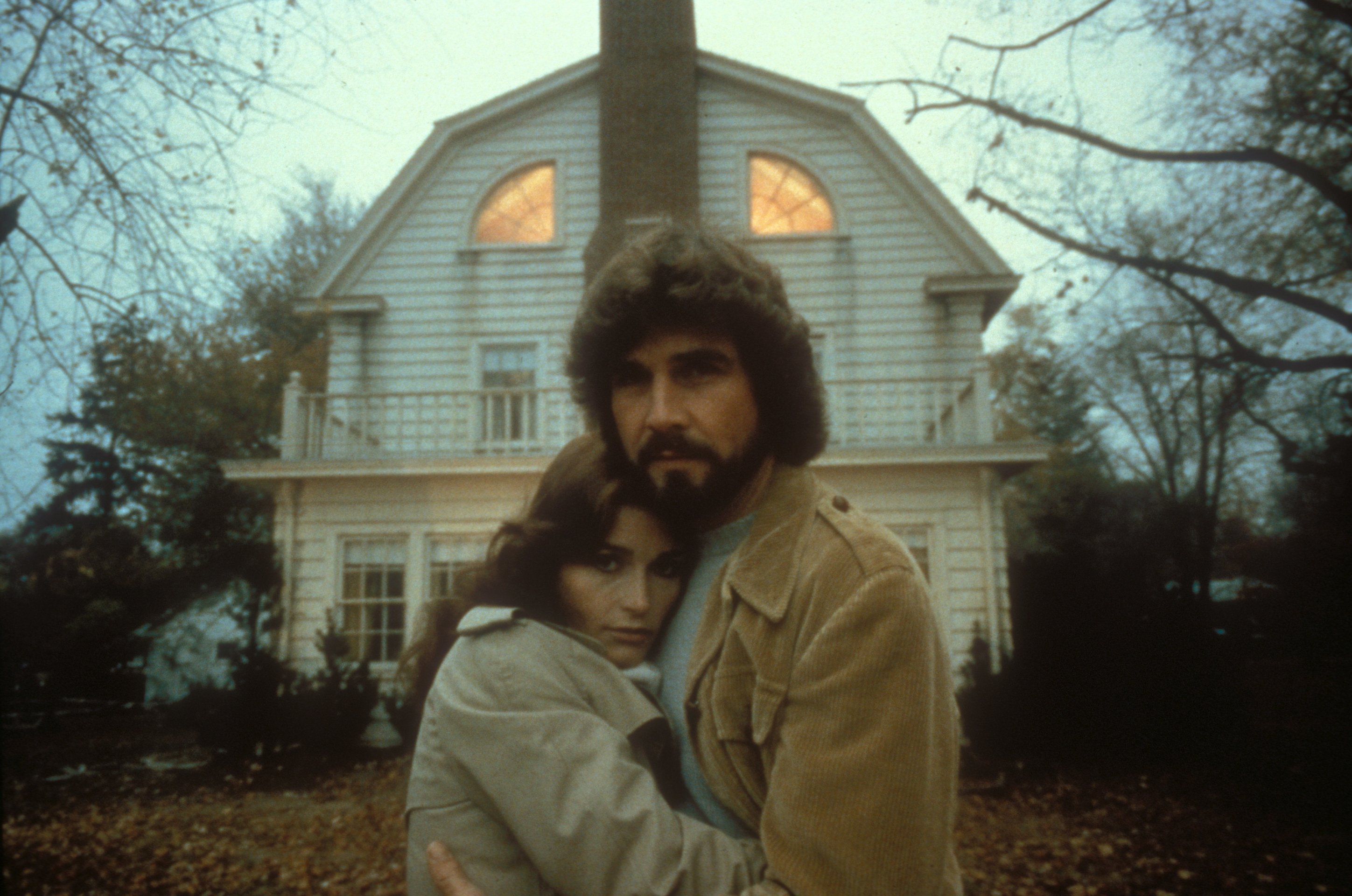Films That Make Dubious Claims to Being True Stories should be differentiated from the theme True Stories and Biopics. Both on the face of it concern themselves with dramatisations of events that occurred in the real world. While the subjects in true stories are covered with a general degree of accuracy, here we concern ourselves with:-
- Stories in which real world events have been substantially fictionalised
- Stories where what is being claimed as true should be regarded with a highly sceptical eye such as accounts of true-life hauntings, exorcisms and UFO/alien abduction stories
- Films that simply make up or offer unverified claims about being based on true stories.
For stories in which real-life figures make guest appearances in fictional stories or have fictional adventures attributed to them see Real-Life People in Fiction.
Stories That Blatantly Fictionalise Real Events
This refers to films that make claims to be based on real events but so distort the truth about what happened that they can be more properly regarded as fiction. The most notorious example of this was The Exorcism of Emily Rose (2005), which was based on the exorcism of a teenage girl that happened in German in the 1970s, but where the film fabricated the details – changing the location to the USA, bumping the setting up by thirty years, amplifying the supernatural actuality of events and reversing the outcome of the court case (which concluded there was no basis to the claims of demonic possession) – to the point of complete fiction.
Another example might be the Cottingley Fairies Hoax of the 1920s, which had England believing that two young girls had captured photos of fairies at the bottom of their garden. This has resulted in two films, FairyTale: A True Story (1997) and Photographing Fairies (1997), which held the view that the fairies were real, even though the incident was proven to be a hoax.

There are works that claim to be biopics but substantially fictionalise the lives of their true-life subjects. Examples here might include Hammer’s Rasputin The Mad Monk (1966), which turns the story of Grigori Rasputin into a horror film; Vlad the Impaler (2000), which mixes the true story of the tyrant who lent the world his name Dracula with vampire mythology; Finding Neverland (2004), a made-up story about Peter Pan creator J.M. Barrie; and The Raven (2012) concerning the last days of Edgar Allan Poe, which has him hunting a serial killer.
Also included would be- The Curse of King Tut’s Tomb (1980), which allows the story of Howard Carter’s uncovery of Tutankhamun’s tomb to become dominated by the tabloid myth of a curse; Wes Craven’s The Serpent and the Rainbow (1988) based on the story of biologist Wade Davis who travelled to Haiti to find the drug that is used in voodoo religion to create zombies where the film blew the relatively mundane events up into a full horror story that never happened; 300 (2007), which turned the depiction of the historical Battle of Thermopylae in 480 B.C. into something wholly fantastical; The Institute (2017), which turns the depiction of a 19th Century asylum into a horror story; and Cocaine Bear (2023), which pumps the true story of a bear that consumed a haul of cocaine that killed it up into a story about a rampaging, drug-wired bear.
Depictions of the Paranormal and Fringe Science
It surprises some that this site does readily accept claims to the existence of UFOs and the supernatural. Rather it has been the policy of Moria that all such claims be treated with firmly sceptical regard. Under sceptical examination, many of the claims disappear or are revealed to have rational, mundane explanations.
In almost all of these examples, the actual claims about ghostly appearances and the like have been considerably embellished over what is claimed that happened for the sake of making a film more dramatic. The most notable example is The Conjuring 2 (2016) where the claims of the involvement of ghost hunters Ed and Lorraine Warren were blown up from one day’s consultation to having them defeat the entire agency in the house.
The most well known of these was The Amityville Horror (1979), which was based on a non-fiction book about a family that claimed to stay in a house for 28 days before being driven out by supernatural phenomena. The family’s story was later revealed to be a hoax, but this did not stop the film from being a huge success and spawning a host of sequels. The same story was still being peddled as true over 25 years later by the remake The Amityville Horror (2005).

Also included here are:
– Claims made about true life hauntings and ghost stories such as The Entity (1982), An American Haunting (2005), The Haunting in Connecticut (2009) and sequel, The Quiet Ones (2014), The Enfield Haunting (2015), Veronica (2017) and Winchester (2018).
– Films about paranormal investigators such as Phenomena (2023) and in particular The Conjuring (2013) and sequels, which led to a series of entirely fictional spinoffs such as Annabelle (2014) and The Nun (2018)
– Claims about true-life UFO encounters and alien abductions such as The UFO Incident (1975), The Aurora Encounter (1985), Communion (1989), Fire in the Sky (1993), The Fourth Kind (2009) and Skinwalker Ranch (2013).
– Films about true-life accounts of possession and exorcism such as Possessed (2000), The Exorcism of Emily Rose, Blackwater Valley Exorcism (2006), Anneliese: The Exorcist Tapes (2011), The Rite (2011), The Possession (2012), Deliver Us From Evil (2014), The Exorcism of Anna Ecklund (2016), The Crucifixion (2017), The Conjuring: The Devil Made Me Do It (2021), The Exorcism in Amarillo (2020), The Pope’s Exorcist (2023), The Deliverance (2024) and The Ritual (2025).
– Depictions of the lives of psychics such as Man on a Swing (1974), Talking to Heaven (2002) and the Uri Geller biopic Mindbender (1996)
– Claims about the discovery of Bigfoot and encounters with other cryptozoological creatures such as in The Legend of Boggy Creek (1972)
– The Search for Bridey Murphy (1956) about the claims that a hypnotist managed to hypnotically regress a housewife to her previous life
– The Mothman Prophecies (2002) about the claims of people seeing a shadowy figure that leaves prophetic visions; or The Bye Bye Man (2017) about a boogeyman figure
– Romasanta: The Werewolf Hunt (2004) about a supposed 19th Century werewolf
– The abovementioned Annabelle and Robert the Doll (2015) about supposedly cursed dolls, both of which have spawned multiple sequels
– Johnny Frank Garrett’s Last Word (2016) that maintains that those responsible for condemning an innocent man to a death sentence all fell under a curse
– One could probably also include here The Men Who Stares at Goats (2009), which purports to be a true story about the US Army’s psychic warfare division but this is clearly a film not taking itself seriously.
Films That Make Untrue Claims to Be True Stories
The most notorious of these was The Texas Chain Saw Massacre (1974), which claimed to be based on a true incident, which was entirely a fabrication of the publicity machine. This was still being maintained by the time of the remake The Texas Chainsaw Massacre (2003).
One of the most blatant of these untrue claims was Exorcist: House of Evil (2016) that publicised itself with the entirely false claim that it was shot in the house where the original The Exorcist (1973) exorcism took place. The Fourth Kind (2009)’s claim of alien abduction in Alaska was revealed to be an elaborate creation of the publicity department.
The most notorious example of the fake true story claim was The Blair Witch Project (1999), a video-shot film that claims to be the real account of a group of trampers with video cameras who went missing in the woods while searching for the legend of a witch. The film became a runaway success thanks to an advertising campaign that convinced audience that they were viewing real documentary footage. The claim to being a true story can be applied to every film listed under the topic Found Footage Films, although the popularity of the genre has meant that later entries do so only in the most nominal ways.
There was the famous The Picnic at Hanging Rock (1975) about the mysterious and unexplained disappearance of five girls in Australia in 1900, which was so successful in its fiction that many believed it to be a true story.
The following is a list of films that all make fictional (or unverified) claims to be based on true stories:- The Last House on the Left (1972), Last Cannibal World (1977), The Evictors (1979), Monster (1979), Macabre (1980), The Emerald Forest (1985), The Great American Snuff Film (2003), Broken (2006), Them (2006), Frat House Massacre (2008), The Clinic (2010), Uninhabited (2010), Rift (2011), The Factory (2012), A Haunting at Silver Falls (2013), The Appearing (2014), The Devout (2015), Carnage Park (2016), Parasites (2016), Recovery (2016), Slumber and Crawl (2019).
Recommendations
(ie the films here that make for an entertaining fiction)
- The Texas Chain Saw Massacre (1974)
- The Picnic at Hanging Rock (1975)
- The Serpent and the Rainbow (1988)
- Fire in the Sky (1993)
- The Blair Witch Project (1999)
- The Mothman Prophecies (2002)
- The Great American Snuff Film (2003)
- 300 (2007)
- The Men Who Stares at Goats (2009)
A full list of titles can be found here Claims to True Stories

